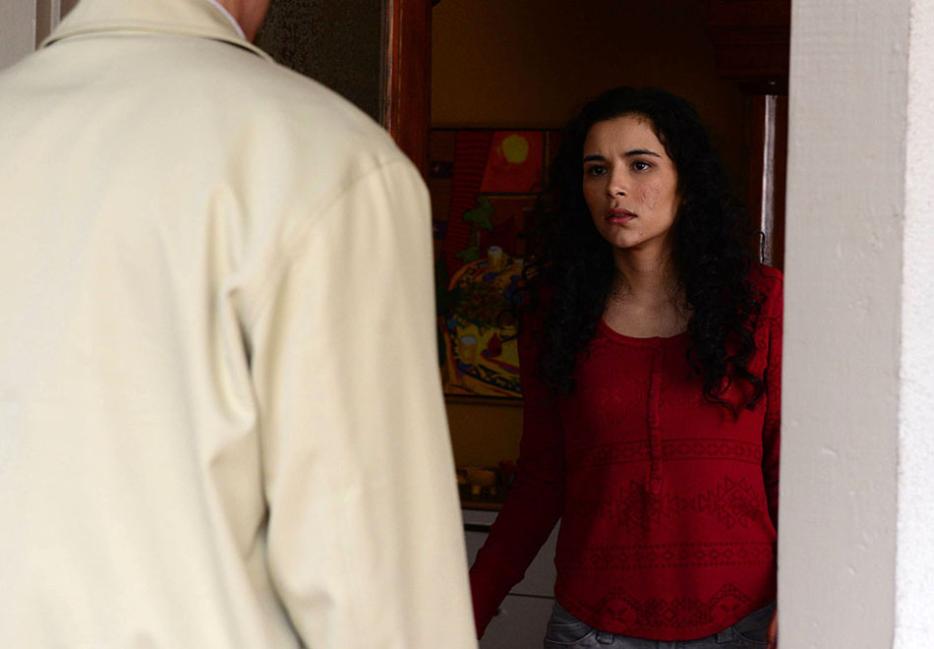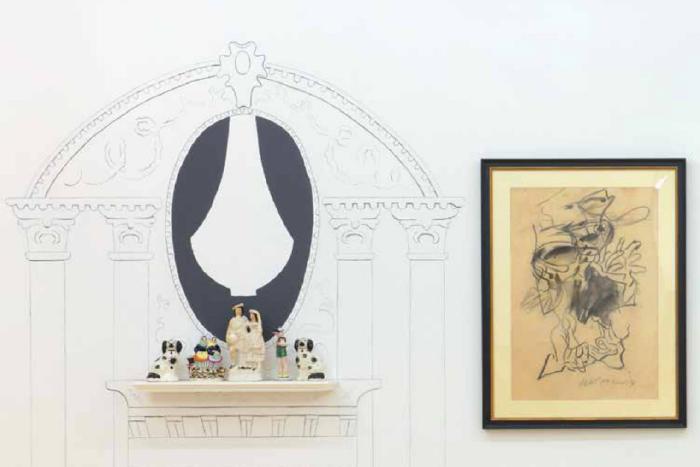The highbrow take on Breaking Bad is that Walter White’s story is that of Faust: man sells his soul to the devil in exchange for earthly knowledge, the alchemical skill of turning base materials (sinus medication) into gold (blue). The agent of Satan is Mephistopheles which, if you’re a poor speller, looks enough like methamphetamine. Spoiler coming: in neither case does it end well for the hero, who at least, in his despair, finds redemption.
That’s enough for a Columbia grad student’s paper, but if you need a smokier gun, here it is: in the final episode when Elliott and Gretchen Schwartz come home to what they think is an empty house, where Walt lurks in the shadows, they turn off the alarm and turn up the sound system. We hear classical music. It flew over my head, but credit goes here to the Internet wags who, within minutes of the broadcast, sourced the piece: an excerpt from Gounod’s 1859 opera, Faust.
Ever since Hollywood gave up on storytelling in favour of blowing up things and planets, the task of epic narrative has gone to the cable TV writers. And, as with Breaking Bad, those writers have found rich source material in opera. Take Mozart’s Don Giovanni: a prideful nobleman destroys the lives of all in his path until, in a flash, he’s taken to hell while the ensemble sings, “Such is the end of the evildoer: the death of a sinner always reflects his life.” This is the story of Tony Soprano. In The Rake’s Progress, by Stravinsky and W.H. Auden, Tom Rakewell finds a magic machine that will feed the masses by turning stones into bread. Only when he tries to sell his machine does he discover it’s all a sham. Give Tom a suit and a scotch and he’s Don Draper. For TV writers, the opera hall is a place where the big, tragic stories have, over generations, been suitably focus-grouped: what works at La Scala will work on HBO. And even for viewers who don’t know opera there is a shiver of recognition: somehow it all seems deliciously familiar.
Which may explain one of the most troubling plot twists in the last season of Breaking Bad (stop here if you haven’t seen all of Season 6), the fate of Andrea Cantillo, Jesse’s ex-girlfriend. Like Jesse, she was a user. They met at Narcotics Anonymous. Her 10-year-old brother is killed by drug dealers, and her own son is nearly poisoned to death by Walt in a bid to turn Jesse against their enemies. But all she wants is for Jesse to get clean, to find his way. One night a man comes to her door claiming to be Jesse’s friend. Her instinct to save Jesse clouds her common sense, and she steps onto the porch where she’s shot in the head. I watched this and thought of the rattling, relentless scene from The Sopranos where Adriana, also guilty of little more than loving the wrong guy, is taken into the woods and killed the same way. In both shows mobsters kill mobsters, drug dealers kill drug dealers, and life on the underbelly carries on. But to lift a story into tragedy, the naive, big-hearted woman must die. This too is an opera trope.
In Verdi’s La Traviata, Violetta is a courtesan, a woman with a past, who falls in love with Alfredo, who comes from a rich, bourgeois family. Despite the mismatch he loves Violetta too, but his father won’t stand for it: when Alfredo is away, the father begs her to end the relationship. Her sexual history, he says (sings, actually) will destroy Alfredo’s standing in the community, and the family’s: Pura siccome un angelo--“I have a daughter as pure as an angel.” For the greater good she agrees, drafts a letter of lies for Alfredo telling him she’s gone back to her old wanton ways. Alfredo, with an eye to his own reputation, swallows the story, and only learns the truth when Violetta is on her deathbed with consumption. It’s a story of social hypocrisy (the hooker has a heart of gold) but also of near-religious sacrifice, all for Alfredo’s benefit: in the end he is redeemed, but she has to die to get him there.
The Traviata story is adapted from The Lady of the Camellias, the 1848 novel by Alexandre Dumas fils (son of the author of The Three Musketeers), who based his story on a real woman named Marie Duplessis, a Parisian courtesan. She was the lover of rich men, monocled captains of industry, Russian spies, the pianist Franz Liszt, and, for a spell, Dumas himself. Born into poverty and to an abusive father who sold her into slavery, she was in her teens when she discovered the subsurface caste system of Paris: there were the grisettes who took money for sex, the lorettes who were kept in apartments paid for by their lovers, and finally the courtesans, whose charms, skills, and beauty earned them solid careers and, in some cases, celebrity status.
Marie soon rose to the top of her profession. Her trademark was the camellia: she wore white camellias on the roughly 25 days a month she was available for business, red camellias on the days she wasn’t. From one admirer she received a rosewood trunk filled with chocolates, each wrapped in a hundred-franc note. According to a new biography called The Girl Who Loved Camellias: The Life and Legend of Marie Duplessis by Julie Kavanagh, the real Marie had much in common with the characters she inspired in Dumas’ novel and Verdi’s opera: she was set to marry a French Count whose family intervened to stop the wedding; by the age of 23, she was dead from consumption.
But Kavanagh goes to some length to separate the real woman from the legend. Compared to Violetta’s romantic sacrifice, “the facts were far more prosaic.” The real Count was deep in debt. His family’s financial advisor (not the father) pressured Marie to drop the wedding plans on the grounds that she had nothing to gain. When that didn’t work, he threatened a lawsuit. Marie, who recognized the benefits of marrying into a noble title, sent the advisor on his way. She and the Count eventually married. “You’re actually demolishing the myth,” wrote a friend when Kavanagh sent him her manuscript to read. “I regard Violetta as one of the great characters in drama. She acquires a true tragic grandeur, and Marie can’t help but be morally dwarfed by her. She’s the sow’s ear.”
It’s a telling reaction: the heart-of-gold courtesan who sacrifices both her love and her life for her man is more appealing than the shrewd businesswoman, the real Marie Duplessis. And why? The dark thrill of the operatic trope: the woman dies to save the man because she has sinned; her sacrifice will set the world right. Mimi dies in La Boheme; Carmen dies in Carmen; in Parsifal it’s Kundry, cursed by her sinful past, who is baptized in the end and dies. The audience that wants to venerate and punish her at the same time is working out some Freudian ambivalence that doesn’t apply to the boys. It works onstage and in the final season of Breaking Bad. Andrea Cantillo was a drug user. Her fate was sealed with crystal meth. A saintly woman with a past, she had to die. Opera says so.
Play the morbid game at home: Six Feet Under? Nate’s wife Lisa Kimmel, the mother of his daughter, is drowned, or maybe she’s murdered. At any rate she ends up at the bottom of the sea, like the heroine in Dvorak’s Rusalka. Now we hear that next season, The Simpsons will kill off a major character. Given the epic tradition, look for a woman with a blemished sexual backstory and a history of hooking up with damaged men. I’m worried about Mrs. Krabappel.
The Lost Library: forgotten and overlooked books, films and cultural relics from Tom Jokinen’s overstuffed Ikea bookshelves.






